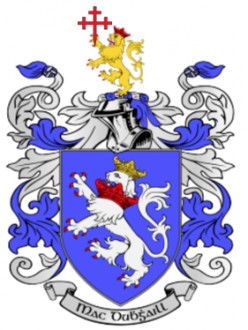Christianity was brought to Britain from Ireland, by the Monks who migrated across with the Scoti (Scots or Gaels) when they established the Kingdom of Dalriada.
The Gaelic monks (as they were known) founded the monastery at Iona and later Lidisfarne Priory on Holy Island in Northumbria, before spreading the Gospel across the remainder of the British Isles.
It is these Gaelic monks that gave us great manuscripts such as the Book of Kells, and the Lindisfarne Gospels.
In seventh-century Britain and Ireland, there were several differences between the Roman Church and the Celtic Church (some might say that the Celtic Church was the original protestant church in Britain and Ireland!). One such example of the differences, was the calculation of Easter.
The Celtic practice was to celebrate Easter concurrent with the Jewish Passover, which was held on the fourteenth day of the first lunar month of the Jewish year, called Nisan, the day of the crucifixion according to The Gospel of John 19:14. However, the First Council of Nicaea in 325 decreed that Christians should no longer use the Jewish calendar but should universally celebrate Easter on a Sunday, the day of the resurrection, as had come to be the custom in Rome and Alexandria.
The Synod of Whitby (Northumbria) was convened in 664 to settle the controversy about the correct method of calculating the date of Easter, and the other differences with the Roman Church.
At the Synod of Whitby, King Oswiu of Northumbria ruled that his kingdom would calculate Easter and observe the monastic tonsure (removing the hair from the scalp) according to the customs of Rome rather than the customs practiced by the Gaelic monks at Iona and its satellite institutions.
There are several Celtic Christian communities around the world today, following the examples of the early Gaelic Monks who brought Celtic Christianity to Britain, a few links to some of the communities are provided below;

